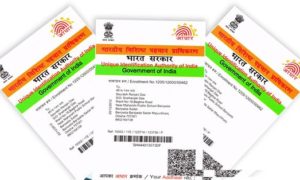Demonetisation provided a digital thrust towards making India a less-cash society, while the Covid-19 pandemic highlights the need of transacting online. In fact, in the last five years after demonetisation, India has taken some big steps towards a digitised economy.
“India continues to be one of the fastest growing digital consumer bases. As per the Confederation of Indian Industry (CII), we have 119.52 crore telecom subscribers and 68.76 crore internet subscribers—millions of Indians have easy access to the Internet and social media. Over the last 13 months of a global pandemic, several consumer behaviours have changed—from the surge of TikToks/TakaTaks to the rise of digital transactions,” said Amit Das CEO and co-found of Think360.
Some of the changes happened after demonetisation includes developments in mobile wallets, introduction of Unified Payment Interface (UPI), improvement in online banking payments like – NEFT, RTGS, IMPS etc.
“Better engineered processes have helped Paytm, Google Pay, Phone Pe, etc. drive an unprecedented growth in digital payments. It creates a distribution leverage that can be unlocked further with mandatory interoperability. Any wallet/PPI can ride the distribution network created by another (or a bank)—for a fee. For customers, it means easy transactions through their preferred wallet,” said Das.
Growth in digital loans and other other innovations have also increased its popularity.
“Almost all wallets have partnerships for distribution of other financial products—loans, insurance policies, investments (digital gold, if you prefer!). A larger limit would ensure people use the wallets as a significant financial relationship conduit. It also creates greater incentive for individuals to move a larger share of their transactions to these PPIs,” said Das.
In fact, during the Covid-19 pandemic, Aarogya Setu app downloads peaked in April 2020 at 80.8 million, while the CoWin app (between performance issues) had 8.3 million registrations on the day vaccination became available for 18-45 age group. However, these are non-trivial numbers when evaluating the digital opportunity in India.
While PhonePe recently hit a billion transactions in a month, a recent RBI announcement has brought wallets (such as Paytm, Mobikwik, etc.) almost at par with banks at service offerings level. Let’s discuss the ramifications.
Does it mean something for the consumption of Financial Services in India?
“Of course. At the very least, the pace of adoption, and at the best, a complete upending of the financial services landscape,” said Das, adding, “To start with, the biggest differentiations of modern PPIs are lower friction, better user experience, and a far higher transaction success rate. While it increases the possibility of higher fraud/risk, a full KYC (bank-grade) process will help mitigate a large part of those concerns. Customers, over the last year, have adopted Video-KYC products (like Kwik.ID) for availing financial services from home. Financial institutions have continued to serve customers even during the pandemic.”
“For a significant shift in digital’s share of wallet, players will drive product innovation for customers, like digital gold, micro-investments, buy-now-pay-later, salary advance loans, etc. Such product innovations will require data enrichment of a different sort enabled by products like Algo360. By casting the net wider, and reducing the entry barriers, we may see a change in savings and investment behaviour of a larger population segment,” Das further said.
The RBI is also looking to award New Umbrella Entity (NUE) for payment licenses in this year.
“It will help create greater investments in developing digital payment rails and a wider reach for the right for-profit reasons. The companies applying for these licenses are looking to launch a comprehensive set of offerings and build greater distribution reach,” said Das.
“Overall, the recent moves are extremely positive news for the innovators, and, definitely, for the customers,” he added.





































